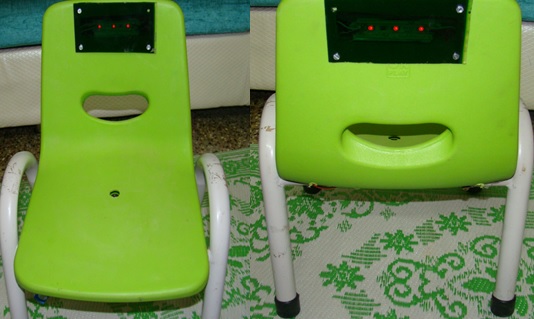
The disclosed talking chair has front and back LED strips. When occupied (i.e. in presence of an obstacle), both the front and back LED strips will remain deactivated, while both the LED strips will come to life, when the talking chair becomes vacant (i.e. in absence of an obstacle). This feature makes the proposed invention stand out even in a dark setting. Preferably, to assist in easier distinction/location of the talking chair, the LED strips can be configured to illuminate/highlight markings such as chair number, row among others. As becomes obvious, it finds application in arrangements having relatively larger occupancy such as auditorium, bus, party, theater, train, among other similar installations.
For more details about technology: Click here
